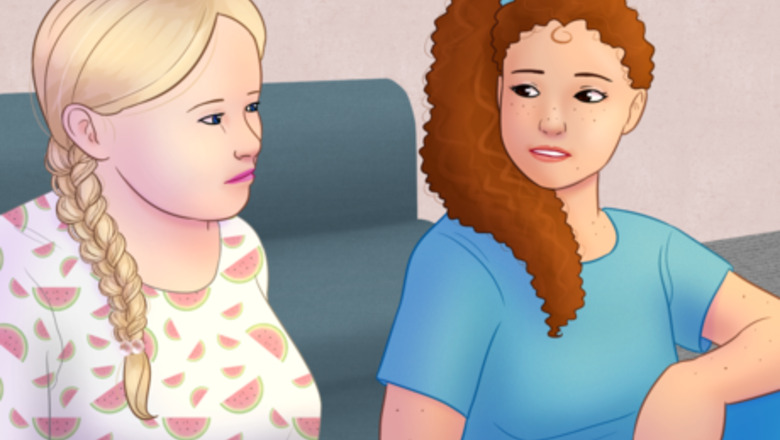
views
Talking with Your Partner
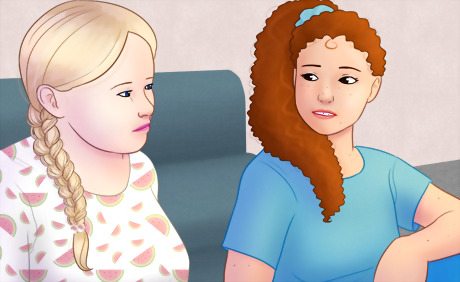
Have a discussion. Your partner may tell you they are asexual, or you may figure it out on your own in the relationship. If you’re upset with the level of sexual intimacy or affection in your relationship, it’s best to talk about it together and have a clear understanding of each other’s needs and desires. It can be difficult to start this kind of conversation. You can say, “I’ve noticed that we approach sex and affection differently, and it would be helpful to talk about it. It seems like I desire sex more than you do. What do you think?” Be gentle in your approach without making accusations or casting blame. Say, “This is something I know is affecting both of us, which is why it feels important to discuss.” If you don't know anything about asexuality, that's fine! Explain to your partner in a kind way that you want to genuinely try to understand more.
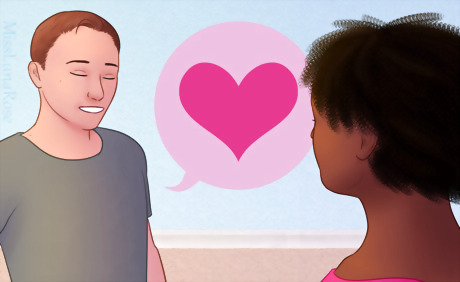
Speak supportively and non-judgmentally. You may feel frustrated and express your frustration to your partner. However, don’t say things that paint asexuality as a negative thing. Your partner may internalize these statements and feel bad about asexuality. Assure your partner that you care and want to understand them. Say things that support your partner and let them know you do not see asexuality as bad. Say, “This can be frustrating to me, but I hope you know that I care about you and want to understand you better. I want to support you.” You can also say, “There is nothing wrong with you. I care about you and that’s enough.” Avoid saying things like, “Don’t worry, you’ll want to one day” or “It’s just a phase.” Instead, say “I love you the way you are. You don’t need to change for me.”
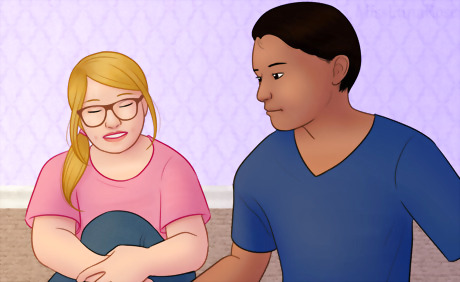
Listen. Let your partner be the expert on their feelings. Listen and ask questions in a supportive way. Let your partner talk and express himself or herself without you interrupting. While the discussion may begin from a place of anger or frustration, do your best to better understand your partner. Be respectful and challenge any assumptions you may have. Practice your active listening skills by restating or summarizing what was said and reflecting the emotions. For example, say, “I hear you saying that you experience sexuality differently from me, and this causes you to feel confused and sometimes a bit sad.” Instead of saying, “Why aren’t you attracted to me?” say, “I’d like to know how asexuality affects your feelings toward me.” Communicate with each other and make agreements as to how your relationship is going to work.

Express your feelings. While it’s important to listen and hear your partner out, it’s also important for you to express your thoughts, feelings, desires, and needs. Even if your feelings differ from your partner’s, it’s okay to express them. Letting your partner know how you feel is just as important as you listening to your partner discuss how they feel. However, don’t make your partner responsible for your emotions. Use “I” statements when talking about emotions. Saying, “I feel sad. I feel frustrated. I feel uncomfortable” is better than saying, “You make me feel sad. You make me feel frustrated. You make me feel uncomfortable.”
Demonstrating Your Support

Enjoy non-sexual intimacy. There are plenty of ways to be intimate, without doing sexual activity. Hugging, kissing, snuggling, making each other breakfast, reading each other poems, holding hands, and more activities can help you two feel closer together. Talk with your partner and see what both of you enjoy doing. Ask how your partner enjoys being intimate. Say, “Feeling close to you is important. How do you express and receive intimacy best?”

Support your partner's self-esteem. Unfortunately, some asexual people may feel like they are "broken" or bad for not experiencing sexual attraction. Your partner may face feelings of frustration or self-hate. Assure them that you love them, asexuality and all, and that you don't think they're inferior because they are different. Validate your partner and your relationship. If you partner is scared you will leave, say, “I care about you, and this relationship is important to me. I am willing to make this work.”

Find a support group. While asexuality continues to exist under the radar to many people, more support groups and resources are becoming available. Some meetups exist for asexuals, and some LGBT organizations have resources for asexuality. Join a support group either locally or online.
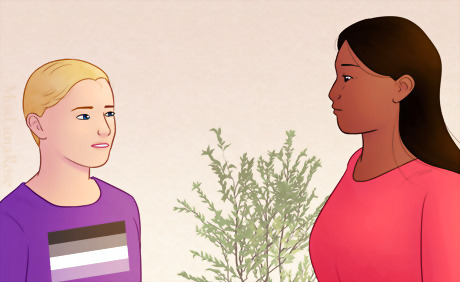
Consider therapy. You may also choose to see a therapist with your partner, which can help both of you communicate more effectively around issues of asexuality in your relationship. It can be difficult to bring up these discussions one-on-one and this can easier with a therapist to guide you through talking about your thoughts and feelings together. Couples counseling can help address how each of you view the relationship and can modify any dysfunctional behaviors in the relationship that do not help you grow. You may also wish to see an individual counselor, which can help you sort out your own thoughts and feelings.
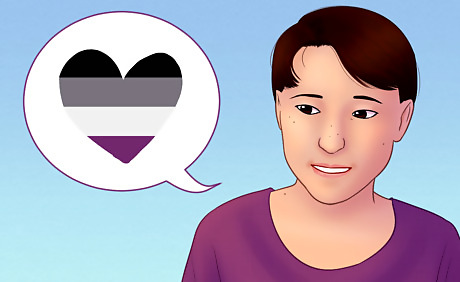
Support them publicly, if they wish. Some asexual people want to live under the radar, while others prefer to show their pride. If your partner is one of the latter, show your support for them being asexual. Go to LGBT+ activities with them, advocate for them, and do what you can to show your support. Even if you're not LGBT, being an advocate for your partner shows that you're a strong ally who's supportive of LGBT people. Ask your partner if they are openly asexual, and if they want to attend any pride events. Pride events exist solely for asexuality, and for the general LGBTQIA umbrella. The colors for asexuality are black, grey, white, and purple.
Strengthening Your Bond

Don’t take it personally. It's not about you. You may have fears that your partner doesn’t really love you, finds you unattractive, or is disinterested in you. People who are asexual are fully capable of feeling and expressing love, yet that love is not connected to sexuality. However, your partner may feel confused or even isolated from you because they may not understand your sexual desire or why it is important to you. Asexuality has nothing to do with you, your body, or your attractiveness. If you start to feel personally offended by your partner, take a step back and remind yourself that asexuality has nothing to do with you or your partner’s love toward you.
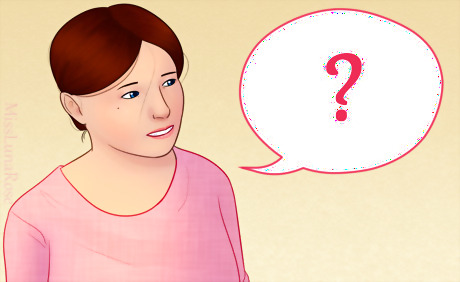
Talk about sex. Even if you struggle to understand your partner and their boundaries, be respectful. Don’t create an environment where sex feels like an obligation or a duty. Sex and affection should help couples feel connected, not disconnected. Sexual activity should be pleasurable and enjoyable for both people involved. It can be difficult to bring up the topic of sex. Say, “I’ve noticed we approach sexuality differently and I’d like for us to say what works for each of us. I think this could help our relationship, and it’s important for us to communicate about this.”

Discuss boundaries. Your partner may enjoy some sexual things and not others. (This is true for non-asexual people as well). Choose a calm time to discuss what your partner is and is not comfortable with, and what you are and are not comfortable with. You could even make a "Yes, No, Maybe" inventory. This can help the two of you better understand each other. You can talk about what kind of touch feels good for your partner. “Do you like it when I kiss you? What about holding hands? I want you to feel comfortable and loved.” If your partner asks you not to touch them in certain ways, respect that choice. If you feel frustrated, talk about it. Use "I" phrasing to discuss boundaries and desires. For example, "I don't like to cuddle while I'm working, but I do like it when I'm relaxed" or "Ideally, I would like to have sex around once a month."
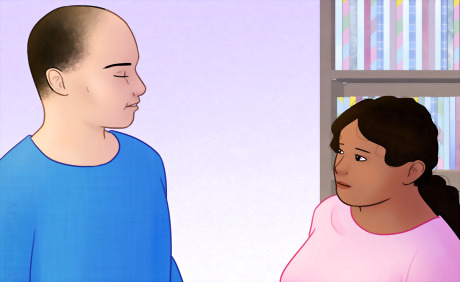
Reach compromises. Some people who are asexual explore sex, while others choose to remain celibate. Talk over your sexual desires and expectations with your partner. Express what you would like in the relationship and allow your partner to express their needs. You may need to find certain compromises for each of you to fulfill this part of your relationship. While compromises are an integral part of any relationship, it’s especially important as you meet each of your needs. Your partner may be uncomfortable with or disgusted by certain sexual acts. They may fear that they aren't good enough, or that you'll leave them. They may feel like they have to choose between their comfort and you. Be prepared to reassure your partner. Talk about intimacy within your relationship. If sexual intimacy is off limits, talk about emotional intimacy and the role of affection. Intimacy in an important part of relationship, and it’s important to feel close to one another, whatever that means for both of you.

Don't pressure your partner. Just as people in healthy relationships don't press each other to convert religions, create babies, or make other big choices, people in healthy relationships don't pressure each other to have sex. You shouldn't have sex with your partner if they aren't going to feel good about it, and constantly bringing it up won't make them suddenly like it more. For some people, sexual differences are a dealbreaker. If you are too different, it may not be a relationship worth continuing. Other people are willing to have an open relationship, where the non-asexual partner can go to others for sexual fulfillment, but remains romantically attached to the asexual person. Other people try polyamory. If you and your partner are very different, have a conversation about how to deal with this.
Improving Your Knowledge About Asexuality

Understand asexuality. An asexual individual is someone who does not experience sexual attraction. Most people find some people attractive and some non-attractive. Asexuals do not feel sexual attraction to anyone. Some asexual people may view others as attractive, but do not experience a sexual draw. There are two kinds of asexuality: some people have a sex drive yet do not direct it with another person, and those that have no desire for sex at all. Some asexual people will masturbate but not engage in sex. Asexuality is different from celibacy. Celibacy is a choice and being asexual is not a choice. Some people are "grey asexual," or partially asexual. They experience sexual attraction sometimes, but not nearly as often as everyone else.

Recognize that asexuality is not a disorder. While frustrations can arise in a relationship between an asexual and non-asexual person, there is nothing inherently wrong with being asexual. It is not a disorder and cannot be "fixed." A few people who are asexual may see it as a problem, yet the biggest problem appears to be misunderstanding around asexuality as a whole. If your partner is asexual, recognize that you cannot change them, any more than you could make yourself asexual. To continue the relationship, you must support your partner.
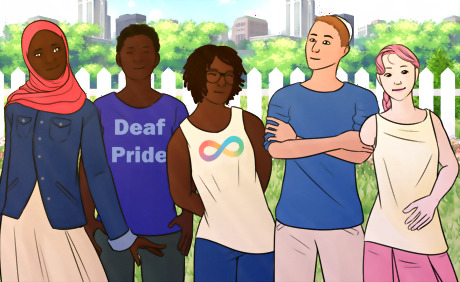
Identify differences in asexuality. Some asexual people will enjoy hugging and kissing. Others are romantic but not sexual, and still others are aromantic (not interested in giving or receiving romance). Asexual individuals may choose to engage in sexual activity with their partners in order to please the partner. Not all asexual people fit into one category. Asexual people identify as many romantic orientations, including but not limited to gay, heteroromantic, aromantic, and panromantic. Some asexual people are sex-repulsed, meaning they think sex is gross and don't want it. Others may find it boring, neutral, or enjoyable. Ask your partner how they feel.
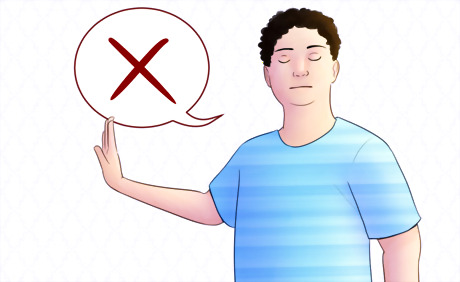
Avoid believing myths about asexuality. Asexuality is different from celibacy, sexual repression or aversion, sexual dysfunction, or a loss of libido as a result of age or circumstance. Asexuality is not associated with problems falling in love; a person who is asexual can fall in love. Being asexual does not mean that someone has a fear or inability to fall in love or find a partner. Asexuality is not the same as having no interest in sex or having no libido. Some asexual people are interested in sex and can experience sexual arousal and orgasm.

















Comments
0 comment